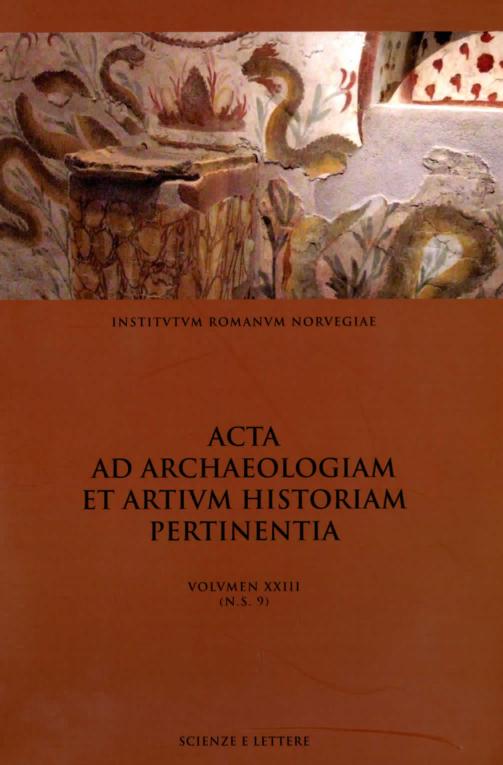Some Aspects of Boundaries in Public Space in Archaic to Classical Greece
DOI:
https://doi.org/10.5617/acta.5767Sammendrag
"In this study an alternative perspective of public space is adopted through the use of four aspects of architecture: the sequence (relative chronology), edges (material boundaries of space), circulation paths (possibilities of moving in space), and the unfinished features observable in public space; a distinctive approach to viewing and explaining architecture emerges.
The results of the investigation can be applied to public space in different areas and situations. In the sequence, the long use of buildings as elements in the composition of space (termed endurance) can be noted, stressing the appearance of the older buildings. Considering the use of dismantled or unfinished buildings in significant locations, the offert of designing and erecting buildings can be identified as an important aspect of construction. The investment in architecture included not only the material characteristics of the structure but also the visible labor involved. The edges and circulation pattern were arranged to manipulate the three-dimensional quality of the environment, by positioning terraces as well as buildings in such a way that the natural terrain had an eliminating or emphasizing effect, not least the contrast between built and unbuilt space. In regard to the endurance of a majority of the buildings in the composition of space, minor elements like statue bases and votive monuments served to articulate the circulation paths within the environment. These monuments became important guides and transformers in the public space in relation to the older framework of buildings which persisted through time.
"
Hvordan referere
Utgave
Seksjon
Lisens

This work is licensed under a Creative Commons Attribution-NonCommercial 4.0 International License.
Authors who publish with this journal agree to the following terms:
- Authors retain copyright and grant the journal right of first publication with the work simultaneously licensed under a Creative Commons Attribution License that allows others to share the work with an acknowledgment of the work's authorship and initial publication in this journal.
- Authors are able to enter into separate, additional contractual arrangements for the non-exclusive distribution of the journal's published version of the work (e.g., post it to an institutional repository or publish it in a book), with an acknowledgement of its initial publication in this journal.
- Authors are permitted and encouraged to post their work online (e.g., in institutional repositories or on their website) prior to and during the submission process, as it can lead to productive exchanges, as well as earlier and greater citation of published work (See The Effect of Open Access).





